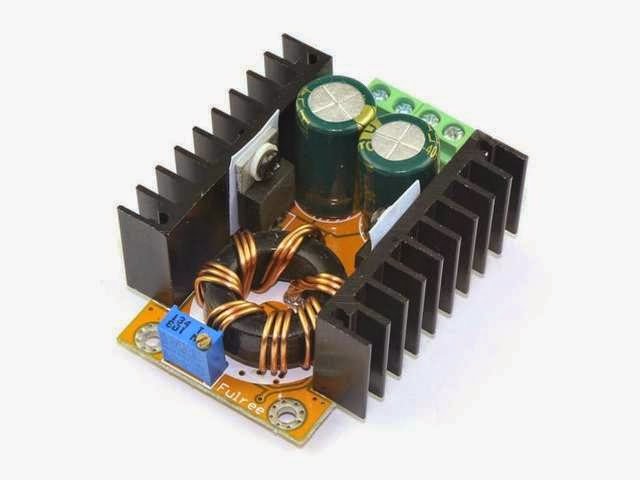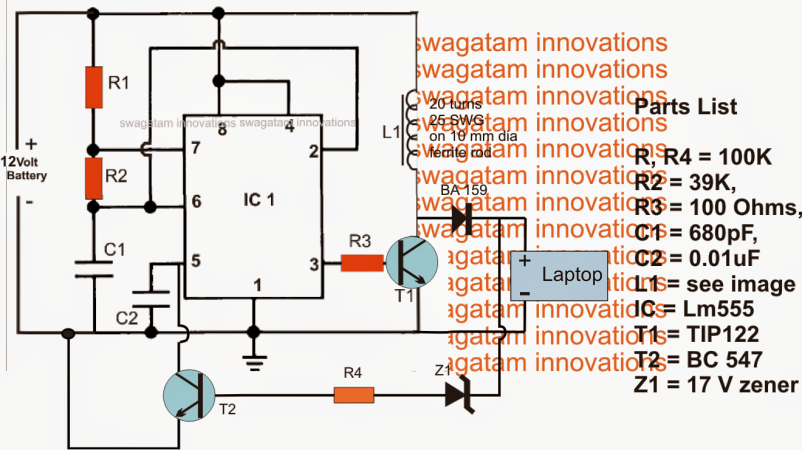The submit talks about a basic enhance converter circuit for charging laptops from a 12V car battery.

The recommended inverter circuit is definitely a just simply boost converter unit created for producing the necessary laptop charging voltage.
A basic boost converter can be created utilizing the IC 555, I probably have talked about it by means of various other articles within this site.
As might be observed right here figure, an easy yet very economical boost converter circuit could be designed for making use of with laptops from any specific high current source acquiring a lower voltage than the laptop charging level.

The numerous phases incorporated in the above 12 V laptop boost charger circuit could be recognized given below:
IC1 which happens to be a 555 IC is set up as a regular astable for producing a dependable specific frequency at the rate of 12 kHz which can be obtained at pin3 of the IC.
The above high frequency output is provided to the base of a driver BJT T1 for activating the above frequency with high current in L1.
On account of the inherent property of the inductor L1, throughout every OFF time of T1, the exact quantity of stimulated voltage is kicked back from the inductor L1 and provided to the load attached at the output via the fast recovery diode BA159.
The load the following is the laptop which allows the enhanced voltage for charging its internal battery.
Given that the laptop may need an accurate 19 to 20V for the functions, the output from L1 has to be controlled and stabilized to be able to render things secure for the associated laptop battery.
The above measures is looked after by presenting T2 and the connected R4 and Z1 elements.
Z1 is chosen to be precisely equivalent to the laptop charging voltage that is at 20 V (17V is incorrectly demonstrated in the diagram).
At any time the output tends to drift away from this value, Z1 receives forward biased activating T2, which often grounds pin5 of the IC.
The above circumstance instantly decreases the IC 555 pin3 voltage to minimal levels for that specific on the spot until Z1 prevents carrying out along with the circumstance is restored to the safe zone....the switching is sustained at a swift speed preserving a continuing voltage for the laptop
Leave a Reply